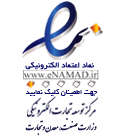Search published articles
Showing 4 results for Abbassi Daloii
Asieh Abbassi Daloii , Esmatalsadat Mousavi ,
Volume 10, Issue 6 (Nov-Dec-2016 2016)
Volume 10, Issue 6 (Nov-Dec-2016 2016)
Abstract
Hadi Alinejad, Asieh Abbassi Daloii, Parvin Farzanegi, Ahmad Abdi,
Volume 15, Issue 1 (Jan-Feb 2021)
Volume 15, Issue 1 (Jan-Feb 2021)
Abstract
Seyedabdullah Mosavi, Alireza Barari, Asie Abbassi Daloii,
Volume 17, Issue 5 (Sep-Oct 2023)
Volume 17, Issue 5 (Sep-Oct 2023)
Abstract
Fariba Rasannezhad , Asieh Abbassi Daloii, Javad Ziaolhagh , Ahmad Abdi ,
Volume 18, Issue 6 (Nov-Dec 2024)
Volume 18, Issue 6 (Nov-Dec 2024)
Abstract
| Page 1 from 1 |

This work is licensed under a Creative Commons Attribution-NonCommercial 4.0 International License.



